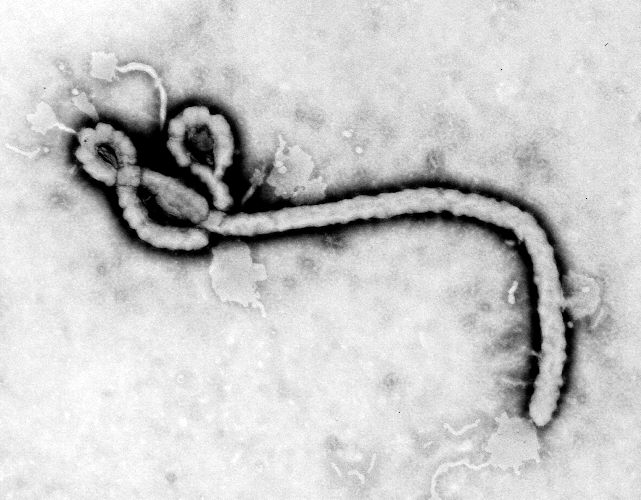Doctor Who Was Possibly Exposed to Ebola Receives Experimental Vaccine

A U.S. doctor who was treating Ebola patients in Africa received an experimental vaccine after possibly being exposed to the disease, and he did not get sick, according to a new report of his case.
When the man was working, a needle pierced his double layer of gloves, and penetrated his skin. Although it's not certain that the needle or gloves were contaminated with the Ebola virus, it's possible that the experimental vaccine may have helped him avoid contracting the deadly disease.
In September 2014, the 44-year-old physician was working in Sierra Leone, when a needle was accidentally stuck into his left thumb. Such accidents pose a "significant risk of infection," researchers wrote in the report, published today (March 5) in the journal JAMA.
In an effort to prevent an infection from taking hold, the man was given an experimental Ebola vaccine called SVΔG-ZEBO, and was transported to the United States on an evacuation jet.
The man's case does suggest that this vaccine "can be used as a postexposure treatment, like the rabies vaccine," Thomas W. Geisbert, a professor of microbiology and immunology at the University of Texas Medical Branch, who was not involved in the case report, told Live Science in an email. [How Do Ebola Vaccines Work?]
But two other experimental treatments for Ebola, called ZMapp and TKM-Ebola, "are, by a very large margin, the lead candidate[s]" for treating people exposed to Ebola, because these are the only treatments that have been shown in experiments to completely protect nonhuman primates that have been exposed to Ebola, Geisbert said.
The doctor who received the vaccine developed nausea, fever, muscle aches, chills and headache within hours. He was treated for his symptoms and recovered in a week.
Get the world’s most fascinating discoveries delivered straight to your inbox.
The health care workers who treated the man ran blood tests looking for Ebola but detected no evidence that he was infected, according to the report.
However, it remains unclear whether the vaccine "is safe or effective for postexposure vaccination in humans" who have been injected with a needle or have had other high-risk exposure to the Ebola virus, the researchers who treated the man wrote in the report.
Until this doctor was vaccinated, only one other person had received this vaccine, according to the report. That case involved a man who'd had high-risk exposure to Ebola in 2009, and who also developed a fever and muscle aches 12 hours after being given the vaccine.
Since the 2014 case described in the new report, multiple early-phase trials of the vaccine have begun, but the results have not been published, according to the report. Some tests on nonhuman primates have shown that 50 percent of the animals survived what would normally be a fatal dose of the Ebola virus if they were given this vaccine within 30 minutes after being injected with the virus.
The survival rate was 25 percent for animals that received the vaccine within 45 minutes after receiving a fatal dose of the virus, according to the report.
Geisbert said that, from his understanding, neither ZMapp nor TKM-Ebola was available in this particular case, he said.
"My own view is that I would want either ZMapp or TKM-Ebola if I were exposed to Ebola," Geisbert said. "However, if [those were] not available, I would certainly want the SVΔG-ZEBO vaccine."
Follow Agata Blaszczak-Boxe on Twitter. Follow Live Science @livescience, Facebook & Google+. Originally published on Live Science.
 Live Science Plus
Live Science Plus





